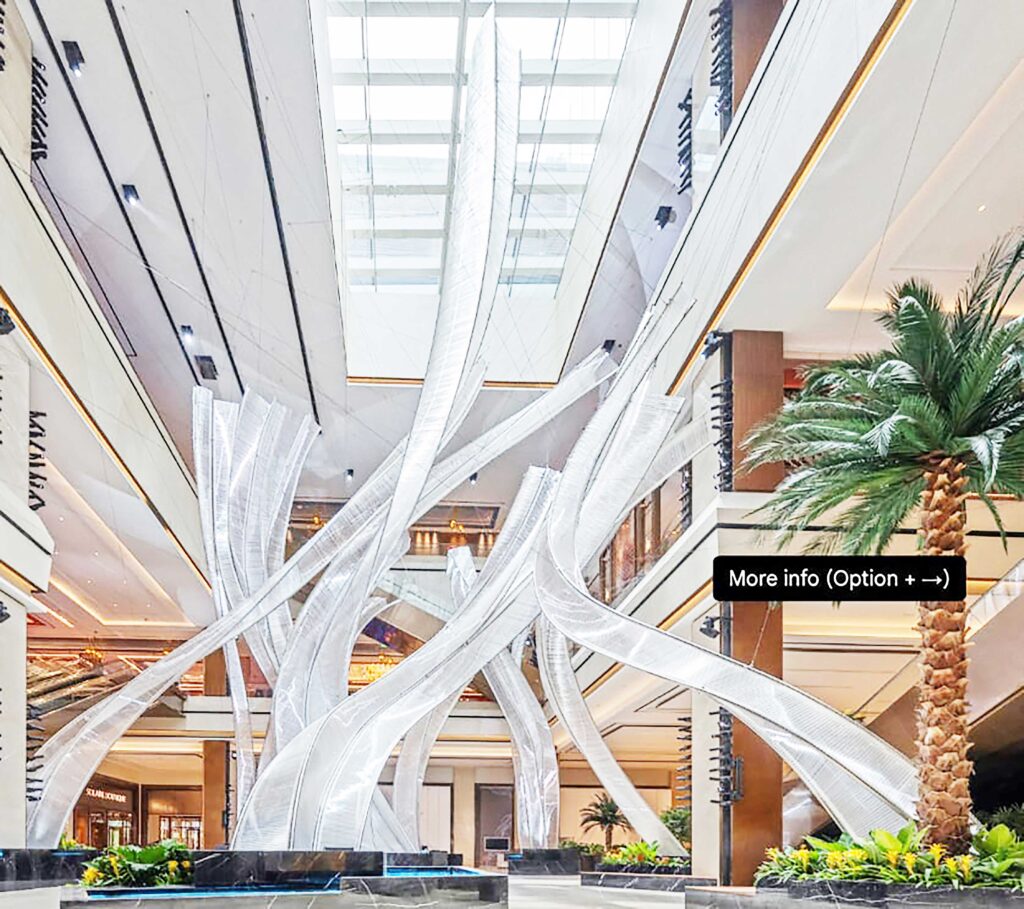Inside Solaire Resort North, glass coils upward in translucent spirals, catching and releasing light with every shift of the day. The Mangrove, a sculpture that rises over 25 meters, has become part of the city’s landscape of records and landmarks. Guinness World Records now recognizes it as the largest glass tube installation ever created.
The record was confirmed on July 31 by Guinness adjudicator Emi Saito certifying the sculpture’s height at 25.396 meters. Gregory Hawkins, president and COO of Bloomberry Resorts Corporation, accepted the certificate. He was joined by Solaire Resort North COO Damian Quayle and Bloomberry vice chair for construction and regulatory affairs Donato Almeda.
Quezon City officials led by Vice Mayor Gian Sotto and third district Representative Franz Pumaren also attended, along with Samantha Drummond, founder of Habitus Design Group, that designed the resort’s interiors.
“As we celebrate this anniversary, we’re proud to receive this Guinness World Records title. It’s an honor we share with the people and leadership of Quezon City, who continue to inspire and support our work,” Hawkins said.

“This occasion marks a vision fulfilled,” he added. “From the beginning, we set out to create a space defined by creativity, elegance, and purpose.”
The ceremony opened with a dance performance choreographed by Douglas Nierras. The piece echoed the sculpture’s rising and branching motion, grounding the celebration in movement and metaphor.
Artist Nikolas Weinstein designed The Mangrove. Based in San Francisco, he has created architectural glass installations across Asia and Europe. At Solaire, he used the lobby as a canvas to explore how structure and light can mirror the strength of coastal ecosystems.
Weinstein drew from the geometry of mangrove trees, whose exposed roots protect shorelines and support marine life. In the Philippines, more than 30 native species grow in regions such as Palawan, Bohol, and Samar. Rather than replicate their appearance, Weinstein translated their resilience into form. The sculpture begins at the floor and lifts into space through layered arcs that seem both suspended and in motion.
Seen from below, it suggests a canopy unfolding. From above, it forms a web of curved glass tubes that span the air. The project took four years to complete. Weinstein collaborated with sculptor and technical advisor Florian Claar, using Rhino 3D, Grasshopper, and ShapeDiver to refine the model and coordinate across international teams.
Cutting Edge Solutions fabricated the glass tubes, chosen for their optical clarity and thermal durability. Arup led the structural engineering, while Evermount Construction managed the installation during the resort’s final construction phase.
“This recognition belongs to everyone involved,” Hawkins said. “We thank Samantha Drummond and Nikolas Weinstein for bringing this vision to life.” He also acknowledged the Solaire team. “To those who make this place thrive every day, this achievement reflects your dedication.”
Throughout the day, the sculpture shifts with the light. As sunlight moves across the lobby, it casts changing patterns on the floor and walls. At scheduled intervals, a light and sound show enhances the experience, transforming the atmosphere.
Beside the sculpture, the Mangrove Café offers a relaxed view. Its open design and subdued lighting echo the sculpture’s tone. Guests may enjoy a meal or drink while watching the glass respond to light, sound, and time.
Now a permanent part of Solaire Resort North, The Mangrove is the result of artistic vision, technical precision, and cross-disciplinary collaboration. It encourages guests to pause, look up, and see the space — and perhaps Quezon City itself — with new eyes.





